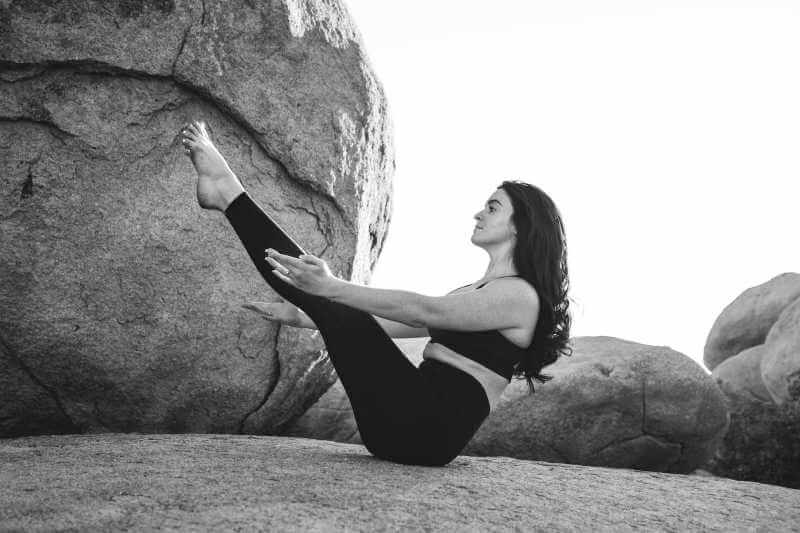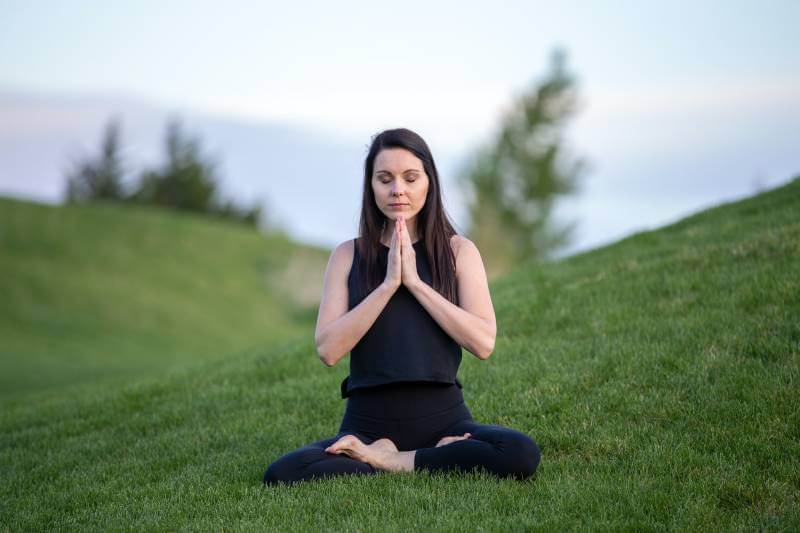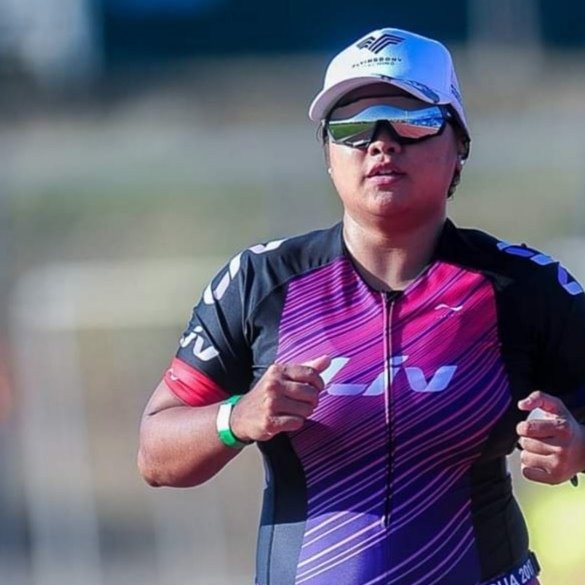Perimenopause is a significant stage that can begin as early as 40 years. It describes the period just before the onset of menopause. It shares many traits with the start of adolescence, such as changing bodies and weight gains. Natural remedies for menopause weight gain can help you shed some extra pounds during this period.
Symptoms like hot flashes and mood swings can be brought on by both menopause and perimenopause. However, symptoms are typically treatable with medications and self-care techniques, including yoga for perimenopause.
Yoga brings calm while the outside world is chaotic. It provides more than simply immediate advantages. Practicing a combination of weight-bearing and restorative poses can prevent bone loss, a common side effect of midlife hormone changes.
For menopausal and perimenopausal symptoms, several people are finding yoga to be beneficial. Discover more about yoga in the following paragraphs, including its benefits for menopausal women and the best poses to practice.
Perimenopause and Yoga
While there is no answer to how to delay menopause with yoga, early perimenopause detection, and preventive measures may simplify the transition. They will also set the stage for improved health, equilibrium, and vitality in the subsequent years following the menopausal stage.
Yoga can help us deal with pressure, a significant factor behind hormone imbalance. To unwind your body, restorative yoga poses should be performed for longer than in traditional yoga, frequently with the assistance of props like folded blankets. If a posture causes pain or discomfort, eliminate it from your routine.
5 Yoga Poses to Help You Prepare for Menopause
Certain positions can help with particular menopausal indicators. However, it would be wise to consult a certified yoga instructor.
#1 Reclining Bound Angle pose for Hot Flashes
Reclining bound angle posture is one of the best yoga poses for hot flashes. It releases tension and cools.
- Start by assuming a seated position on a mat with the legs extended toward the front.
- Then, with the legs forming a diamond pattern, bend the knees, draw the soles of your feet close, and slowly lower yourself backward until you are lying on the mat in a flat position.
- Remain in this pose while taking calm, deep breaths to relax the body.
#2 Boat and Chair Poses – for Belly Fat
The boat position is a core technique excellent for assisting you to tone and strengthen the front and side abdominal muscles.

Kneel on a cushion and take a deep breath before lifting the legs and upper torso and extending your arms towards the knees.
After holding your breath, exhale, lowering the upper body and legs.
The spine, hip, and back muscles will benefit from the chair pose’s strengthening effects.
- Start by standing upright with the legs apart at approximately a hip width.
- Next, with the arms extended high over your head, drop yourself into the position of sitting in a chair by bending your knees.
- As you maintain the position, lean slightly to the front and inhale. Then, stand up straight again.
#3 Squat and Happy Baby Poses – for Low Sex Drive
The squat position can expand your pelvis and hips and improve blood flow to the groin.
Standing with the feet a little wider than the hips, slowly crouch down until your bottom is parallel with the knees or ankles, based on how comfortable that feels. Inhale a few deep breaths, then slowly push yourself up to your initial state.
Happy baby posture helps you unwind and stretches the lower back and bottom muscles.
Kneel up toward your stomach while lying on the back. Next, with the hands holding the outer surface of the feet, broaden your knees while pressing your feet upward to deepen the stretch.
#4 The Cat-cow and Sphinx Pose – for Energy and Relaxation
The cat-cow stance opens the back muscles and relieves achy joints while relaxing.
- Get down on your knees and hands.
- Maintain a straight back, your palms level on the ground, and the knees at least apart at a hip-width.
- Inhale deeply before lowering your belly to the pad.
- Elevate the chest, and raise your gaze towards the ceiling in a cow pose.
- Exhale while rounding your back, suck in your stomach, and lower your face to the ground as in the cat pose.
On the other hand, the sphinx posture can be energizing and prevent you from experiencing drowsiness.

- Begin by laying with the front side on a mat
- Extend your legs behind you, both arms on your sides, and palms facing forward on the mat.
- Take a deep inhalation and raise the torso with the aid of your arms, with the chest, abdomen, and head lifted.
- Inhale as you notice the bend in your back, and exhale as you lower yourself back to the ground.
#5 The Lunge and Shoulder Stand Poses – for Anxiety and Stress
The shoulder stand posture can help you simultaneously decompress and stretch leg and shoulder muscles.
You establish a firm platform for balance by placing the hands behind the lower abdomen while lying on your back with the legs in the air straight up.
Next, while maintaining the head, upper body, and shoulders on the mat, lift your bottom upwards and away from the mat while retaining the legs straight up.
The lunge stance helps you breathe more freely and let go of tension while stretching the hips and other muscles that become stiff under stress.
- Begin on the knees and hands.
- Move forward on one foot, bending the knee, and raise the torso with the hands around the hips.
- The second leg should be extended behind you.
- Looking forward and taking deep breaths, bend your knees further to experience the tension in your hips.
- Repeat the process on the opposite side.
Safe Ways to Practice Yoga During Menopause
Practicing yoga safely is crucial if you have reached menopause or perimenopause. Safety advice includes:

- Use a stool or other props, and avoid forcing uncomfortable or overly challenging motions.
- Before progressing to more challenging postures, try incorporating some easy warm-ups, including shoulder rollover and neck stretches.
- Starting gently is advised because aches, pains, and joint stiffness are frequent menopause symptoms and become more prevalent as you age.
It’s best to practice under the guidance of an experienced teacher. They may advise you on safe techniques and, if needed, modify moves to meet your specific requirements.
If appropriate, they will work with you to devise how to execute HIIT, which is one of the best exercises for perimenopause to alleviate the negatives of menopause.
FAQs of How to Prepare for a Healthy Perimenopause with Yoga
What Exercise Is Good for Perimenopause?
The Department of Health and Human Services advises intermediate aerobic exercise of not less than 150 minutes every week. For intense aerobic exercise, a minimum of 75 minutes each week is the most healthy for women in perimenopause.
It’s also advised to perform weight training workouts at least twice a week. High-intensity workouts for menopause could also be helpful. Distribute your workouts throughout the week if you’d like.
Can Yoga Reduce Menopause Symptoms?
Many women have physical and emotional problems as they transition from perimenopause through menopause, which yoga can help manage. Yoga poses can help maintain muscle flexibility, overall mobility, and equilibrium required to prevent potentially hazardous accidents.

The greatest advantages of yoga will be seen if you incorporate it into a holistic wellness approach that includes dietary recommendations and medical guidance from healthcare providers.
Does Yoga Increase Estrogen?
After a month of yoga, perimenopausal women may experience increased parasympathetic activity, estrogen, and progesterone levels. Yoga has been linked to increased cardiac function and levels of female sex hormones in perimenopausal women. It suggests that it may be an alternative cardioprotective treatment.
Which Yoga Is Best for Hormonal Imbalance?
The cobbler pose is among the best yoga poses for balancing hormones in women because it promotes healthy menstruation. It balances and activates the glands, especially the prostate gland, responsible for promoting ovulation and stimulating the bladder, making it one of the ideal yoga poses to induce a period.
Conclusion
It can be beneficial to use yoga to address symptoms of menopause, like stress reduction and pain management. Consider the signs of menopause that your body generally experiences. It can be frequent stomach and digestive system upset, off-kilter emotions, fuzzy thinking, and even difficulties sleeping.
Yoga practice is helpful when combined with other complementary therapies, including massage, acupuncture, aromatherapy, reflexology, and nutritional counseling, as part of a comprehensive self-care regimen.
Women who can’t take HRT may also benefit from yoga. Yoga, however, can’t replenish or restore the hormones that the body loses from perimenopause through menopause.
Depending on the type of yoga you perform, a daily yoga regimen can aid you in maintaining flexibility, suppleness, and mobility while enhancing your physical strength, mental toughness, cardiovascular health, and sense of equilibrium.

I’m a triathlete and life coach, with a focus on holistic health, fitness & women’s issues.
I also write about my gastronomic adventures and my love for the outdoors.

